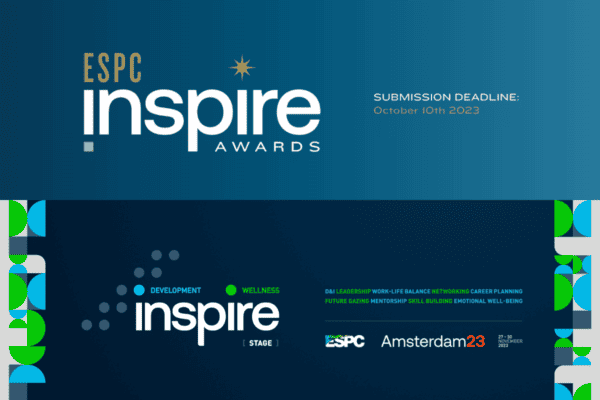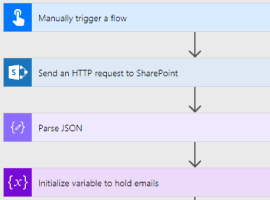Start with Why
The most important aspect of change in relation to software implementations is communication. You only get one chance to make a first impression. To prevent unnecessary resistance (and possibly even sabotage), it is smart to start communication from a good and inspiring message.
Once you have a good why message you can elaborate on this in a communication and training plan, which describes how the communication towards and training of employees will be.
This article provides a concrete and practical way to start your communication based on the Golden Circle, from the book ‘Start with why’ by Simon Sinek. Learn how we are setting the pace for running a collaborative business.
‘The golden circle’ ~ Simon Sinek
Every organisation, but also our own career, always functions on three levels.Whatwe do,howwe do it, andwhywe do it. If all three levels are aligned, it gives us a filter to make decisions. It provides us with a foundation for change. When all three levels are balanced, others will say with absolute clarity and certainty: “We know who you are. We know what you stand for and what drives you”.

“With a little discipline, anyone can learn to inspire. ‘Start With Why’ offers an unconventional perspective that explains WHY some people and organizations are more innovative, more profitable, command greater loyalties from customers and employees alike and, most importantly, are able to repeat their success over and over. These are not the one hit wonders. These are the ones who change the course of industries or even society.”
Watch the video of Simon’s book on: http://ted.com/talks/simon_sinek_how_great_leaders_inspire_action.html
Every organisation knows WHAT they do. That’s the products or services they offer. Some organisations may know HOW they do it. That’s thevalue proposition, the competitive advantage, or theunique selling point. Only very few organisations know WHY they do something. Your why is a cause, a goal or a belief. Why do you get out of bed every morning, or why does our organisation exist, and why should that make a difference to others? Making money is never the why, it is more a result. A good WHY inspires us.
The Golden Circle by Simon Sinek visualises thee WHY, HOW and WHAT. Most organisations and people work from the outside in. We say what we do and how we do it and how we are different in that than others, and we expect someone to ‘buy’ (or buy into) our message (such as a product or new software). The problem however is the HOW and WHAT do not inspire people. Facts and figures may seem very logical, but we do not make decisions on a pure rational basis.
When you want to inspire, then start from the inside out. When we communicate from our goal, cause or belief, we communicate in a way that drives decision making and behaviour. Communicating from the WHY literally touches that part of the brain which inspires behaviour.
This has everything to do with how our brain works. The neo-cortex is responsible for all our rational and analytical thinking and language. And the neo-cortex corresponds with the WHAT. Our limbic brain is responsible for our feelings, such as trust and loyalty. It is also responsible for all human behaviour, and all decision making.
People comprehend enormous quantities of complicated information, such as characteristics, facts and figures. But despite that, communicating this from the outside in will not influence behaviour.
 When we can communicate from the inside out, we are speaking directly to that part of the brain which is responsible for behaviour and decision making. Then people will rationalise their decisions with their neo-cortex. We may think we are rational beings, but we are not at all.
When we can communicate from the inside out, we are speaking directly to that part of the brain which is responsible for behaviour and decision making. Then people will rationalise their decisions with their neo-cortex. We may think we are rational beings, but we are not at all.

That is why we can say people do not buy what you do, they buy why you do it, and the what is simply the tangible evidence of what you believe.
To make the golden circle work well, you have to have a good WHY, a discipline of HOW and consistency in WHAT. Others will only know why you do what you do, if you are clear. You need to speak and act consistently from your values and foundation.
5x Why
Many organisations find it difficult to formulate an inspiring ‘Why’ for the organisation. And employees may even find it harder to reproduce one, if the organisation does have one. When a new collaboration platform is introduced it can then be very difficult to formulate an inspiring message that will motivate employees to start using it and change their current work practices (behavior) for it.
Based on ‘Start with why’ by Simon Sinek, and ‘the 5 why’s’ method by Sakichi Toyoda any organisation can start to get to the why of their new software platform.
Start with the organisation’s mission, vision and strategy proposition, if there is one. This is usually represented in a pyramid or triangle. What happens when we look at the Golden Circle from above? We get a cone, or pyramid. Another way of looking at the ‘Why, How and What’ is looking at your organisation’s ‘Mission, Vision and Strategy’.


Just like a child continually keeps asking parents ‘why?’when something is explained, use the ‘5x why’ method to keep asking why until it is no longer possible. Experience shows that we tend to formulate a how, rather than a true why. Apparantly it takes us several steps to get to the core of our why.
I frequently work with clients in a workshop based on the two principles ‘Start with why, and the ‘5x why’ method to get to an inspiring and crystal clear ‘why message’. A message that will inspire employees to change their behavior, to motivate them to start using the new tools. The message should give answers to questions such as ‘Why are we choosing this platform?’, ‘What is the underlying thought?’ and How will it help us to achieve our company’s mission?’

Conversation to get to the core why
Once you have a good ‘why’ a solid communication plan and adoption plan can take shape. The message returns consistently in all following communication and user-adoption materials (scenarios, quick reference cards, training, video, etc.).
The why message is literally setting the pace for your user adoption journey.
CHANGE method for adoption

We inspire, equip, and motivate your people to embrace the transformation journey in their sphere of work. Our Change approach is based on a mix of successful international concepts and methodologies from the best guru’s to drive sustained transformation in how people work together in the newly emerging collaborative business.
Silverside uses the Golden Circle theory by Simon Sinek to successfully communicate the change of a software platform towards all employees. In combination with the technology lifecycle and the four phases of user adoption it creates the first layer of the Silverside 3G adoption model:

- Use the ‘Why’to explain the deeper meaning of the change. Do not focus on cost-reduction (this is a result!), communicate the real value of collaboration;
- Use ‘How’ to show how easy the concept scan be applied in a daily work scenario;
- Use ‘What’ to show what functionality you offer and to explain what support you have in place in this process of change;
- Use ‘Supportto continuously remind employees of het ‘Why, How, and What’.
Communicating the ‘Why, how wand what’ of a project in the right manner has an enormous effect on the success of the software implementation. It is essential to explain the right expectations to the target groups, and to find a clear way of communicating in line with the ‘why’ and the corporate branding.
We recommend to start with the first communication about the ‘Why, how, and what’ by an announcement by senior management (executive). This demonstrates the involvement and commitment for the project.
About the Author: 
Sasja Beerendonk is a Senior Consultant at Silverside and is one of the most experienced end-user adoption consultants in Europe. She is recognized by Microsoft and IBM as a subject matter expert and speaks at worldwide conferences on social collaboration, change-management and user adoption. She works closely with organisations such as Saxion University, Dutch Tax Office, Kawasaki, SES, NN Group and Shanks. Sasja is passionate about enabling a new way to work, motivating people to embrace technology to work smarter. Besides work Sasja loves running, and going on long walks with her dog. You may wake me up for spinach any time.
Follow Sasja on Twitter: @sbeerendonk











